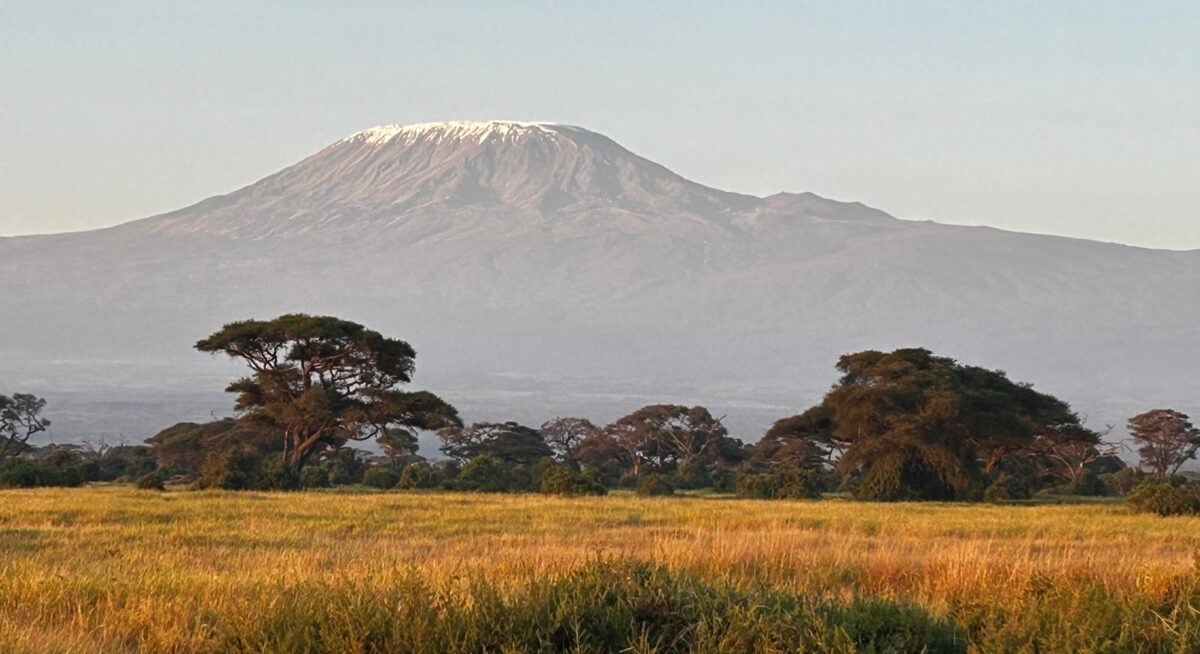
I am entering the country of Namibia for the first time on my African overland journey, so as per my custom it is worth sharing a few factoids about this country to put things in better context and to educate myself (and you, if needed) a little about this corner of the world. Here is what I learned from my research.
- As you can see in the map above, Namibia is a coastal country located on the southwest coast of Africa between the latitudes 18-28 degrees south, which in terms of distance from the equator is the southern hemisphere roughly equivalent to central and northern Mexico in the northern hemisphere. Namibia borders Angola to the north, South Africa to the south, and Botswana, and has a small border with Zambia along the Caprivi Strip – a very narrow strip of land along the Chobe River separating Botswana and Zambia.
- At 318,772 square miles, it is about 20% larger than the state of Texas.
- Roughly 3 million people, compared to ~332 million in the U.S., and is one of the 10 least densely populated countries in the world.
- English is the official language, but there are several other recognized national and regional languages. Only 3% speak English as a home language. Oshiwambo is the most common language spoken and Africaans is the most widely understood national language similar to South Africa.
- Government is described as a unitary dominant-party, semi-presidential presidential republic with both a president and prime minister and a bicameral legislature. The parliament has a lower house (or National Assembly) of representatives elected via proportional representation – just as it should be done in the U.S. -and an upper house (or National Council) comprised of members indirectly elected by regional councils, each with duties roughly comparable to our House of Representatives and Senate. There is an independent judicial system similar in structure and responsibilities as the U.S. system.
- Currency is both the Namibian Dollar and the South African Rand.
- Major exports include diamonds, uranium, gold, fish, and petroleum oils, with China being the major receiver of exports.
- The unemployment rate is alarmingly around 34% and almost half the population lives in poverty. Not surprisingly, there is a huge income disparity between the rich and the poor, which not much in between – a disparity that is growing each year here and elsewhere throughout the world, including in the U.S.
- Like most of the region, it was occupied by humans for probably 10,000 years until it was “colonized” by the Bantu people in the 14th century from west Africa. The country was ruled by separate tribal kingdoms until 1884, when the German Empire established a white-minority apartheid rule over most of the territory, forming a colony known as German South West Africa. Between 1904 and 1908, German troops waged a punitive campaign against the Herero and Nama which escalated into the first genocide of the 20th century. German rule ended during the First World War with a 1915 defeat by South African forces. In 2021, German and Namibian diplomats created a “reconciliation agreement” acknowledging atrocities from the German colonial period. In 1920, after the end of the war, the League of Nations mandated administration of the colony to South Africa. From 1948, with the National Party elected to power, this included South Africa applying apartheid to what was then known as South West Africa. In the later 20th century, uprisings and demands for political representation resulted in the United Nations assuming direct responsibility over the territory in 1966, but South Africa maintained de facto rule until 1973. That year the UN recognized the South West Africa People’s Organization (SWAPO) as the official representative of the Namibian people. Namibia gained independence from South Africa on 21 March 1990, following the South African Border War. However, a couple of areas on the coast remained under South African control until 1994.
- As of March, 2025, Namibia has its first female president, Netumbo Nandi-Ndaitwah.
- Namibia is considered to be one of the most free and democratic countries in Africa.
- Namibia has one of the highest rates of literacy in Africa, estimated to be >92%.
- Namibia has a high HIV/AIDS prevalence rate, with an estimated 12% of adults aged 15-49 living with HIV!
- Namibia is the driest country in sub-Saharan Africa and hosts the famous Namib desert along the coast, considered the oldest desert in the world, and the southwestern-most part of the Kalahari Desert.
- Namibia has the largest free-roaming cheetah population in the world and is one of only two countries to support desert elephant populations!
- Depending on the source, Namibia has between 17-40% of its total land area protected in some form, such as national parks, reserves and community conservation areas. Based on the World Bank’s estimate of nearly 40%, it is one of the highest rates in the world. Interestingly, Namibia was the first country in the world to explicitly include environmental protection in its constitution.

Very interesting Kevin. Thank you! I’m learning a lot about Africa from your posts! Let’s hope I can retain some of this information! Hope you enjoy Namibia!
hey Kev,
just wondering if I can pass along an invitation to this blog to chris buelow, DFW and Hardwick friend of Bill’s and mine . He is keenly interested in your travels from a wildlife perspective. Not sure how private you prefer this blog to be. I know I certainly feel rather privileged to be included!
thanks!
Rick